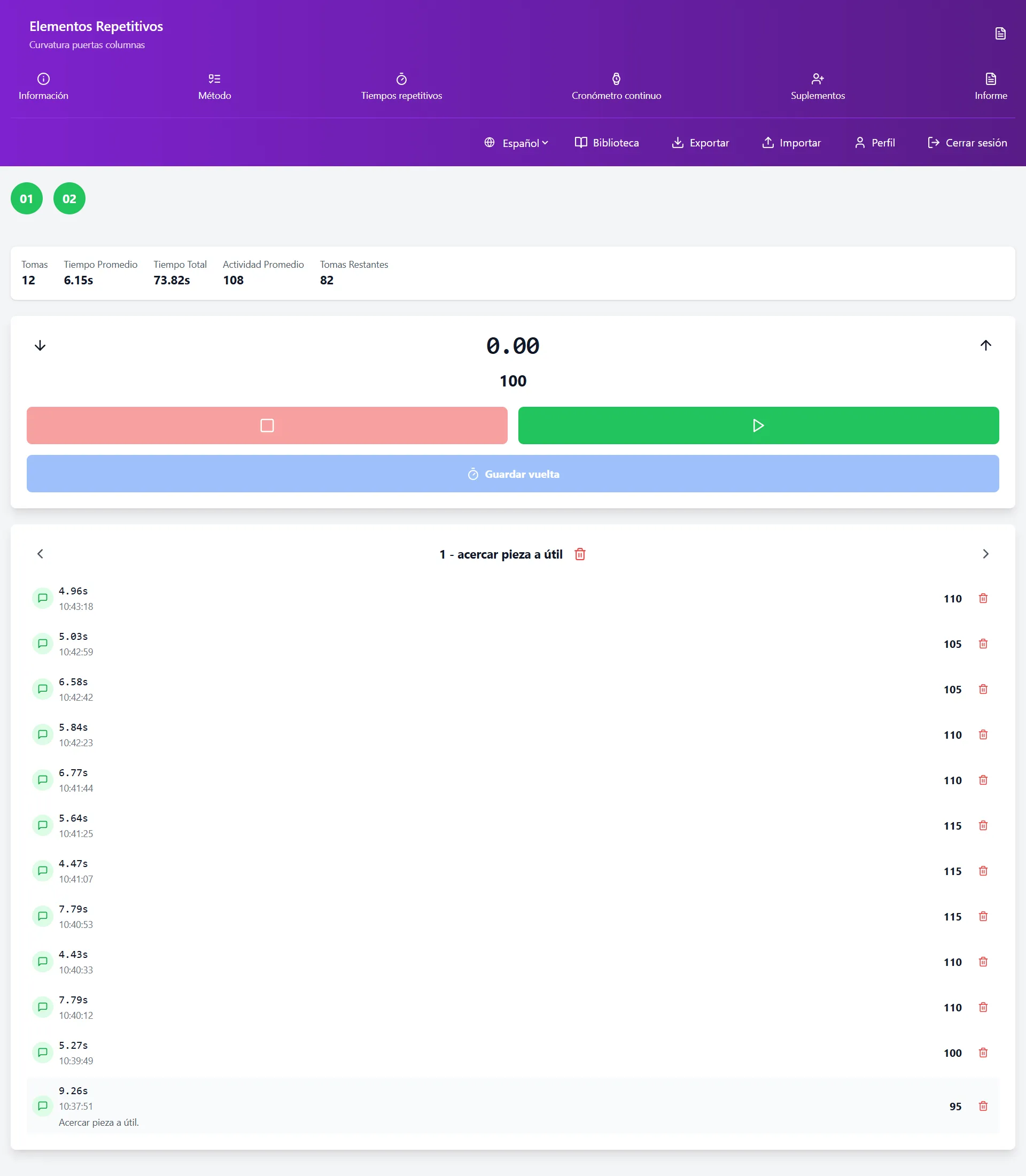Once we have defined what we are going to measure and have ensured that the worker is performing the pre-established method, it is time to record the times of each element. For this, we must for each measurement:
- Time the work elements to obtain the observed time for the task, using a clock (stopwatch) or another device (Android Time Study App). There are two basic methods for timing:
-
The classic method, consisting of a digital stopwatch and a clipboard where you will note down with paper and pen the different times of each measurement, along with their rated activities.
-
The more modern method in which the support is no longer paper and pen but becomes an application specifically designed to perform this type of measurement.
- Evaluate the worker’s pace relative to standard performance (performance rating), to determine the normal time. Standard performance or normal pace is the average level at which a qualified and trained operator can work during a complete day without becoming excessively fatigued. Performance rating is a subjective estimation of the worker’s pace compared to that average level, expressed as a percentage.
Modern Method (Industrial Time Study App)
When entering the time study screen, we will see that we can visualize at the top of the screen some circles with the element number of the work cycle, only those elements that are repetitive will be active, as in this screen we will measure this type of elements. Let’s remember that in a time study, repetitive elements are those that repeat in each work cycle and tend to have a more constant and predictable execution time than casual or frequency elements, which appear irregularly.
When entering the time study screen, we will see that we can visualize at the top of the screen some circles with the element number of the work cycle, only those elements that are repetitive will be active, as in this screen we will measure this type of elements. Let’s remember that in a time study, repetitive elements are those that repeat in each work cycle and tend to have a more constant and predictable execution time than casual or frequency elements, which appear irregularly.
Initially, all those that are repetitive elements will be active by default, so if we click on the start stopwatch button, the record lap button will be activated and each time we press on it, it will automatically move to the next repetitive element.
The order of the elements will be the one we created in the Work Method screen, but we can modify this order by deselecting the active elements and activating them in the new desired order.
We can also deselect all active elements and select just 1 of them, this way we will only take time for that element.
We will select the elements we want to measure and start our time measurements.
As we record the different laps of each element, the application will give us real-time information about the number of measurements we have made of that element, as well as the number of remaining measurements we must make for our time study to reach a reliability of 95%.
The number of measurements will vary depending on how short or long the measurement is (shorter measurements will require a greater number of measurements) and the dispersion between measurements (more stable times will require fewer measurements).
See questionnaire
Complete lesson
Next lesson
Restart lesson
Conclusion
Mastering industrial time study techniques is essential for any professional seeking to optimize production processes. The systematic application of these methods not only improves operational efficiency but also contributes significantly to cost reduction and increased business competitiveness. Remember that precision in measurement and rigorous analysis of data are the basis for establishing reliable time standards that drive continuous improvement in your organization.
